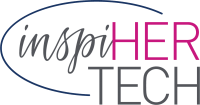“Active hope is waking up to the beauty
of life on whose behalf we can act.
We belong to this world.”
What a year. With so much change, we decided to rethink Belong. So we skipped September and pondered . . .
What does belonging mean for HR and IT leaders? How do you create belonging when you’re managing remote work like a Swiss Army knife?
How do you measure it?
The word “belong” hit home for me recently as I listened to a podcast featuring Joanna Macy, Ph.D., author and teacher.
In her study of living systems, she found the individual is not an individual at all.
She says we belong to the earth and we belong to each other. Whoa!
She asks people to answer powerful questions like:
- When you look at the natural world today, what breaks your heart?
- When you look at humanity today, what breaks your heart?
- How will we heal?
Companies must be profitable to survive. There is, however, a larger mission.
Companies must manifest belonging – that sense of being accepted and included.
Many say belonging is the #1 miss in the D & I conversation.
Creating a place where we know we belong and can work as one is to solve that which is breaking all of our hearts.
When we remember this, then inclusion and belonging cannot help but rise up naturally.
We hope you love the quick, power punch format of Belong as much as we do!
Our promise: If you give us five minutes, we’ll give you 5 takeaways to make workplace inclusion and equity a reality for HR and technology hiring executives.
We all belong,

CEO | Founder of InspiHER Tech, a Laso Company
Our why: #HireMoreWomenInTech

1
The HR role is evolving. According to Human Resource Executive, HR professionals are leading the way on social justice issues, mental health, well-being, and even revamping the workplace as a way to “heal.” Addressing these broader issues, while challenging, unifies a work culture where people feel like they are seen, heard and belong.
2
Perspective. From the article above, Jill Smart, president of the National Academy of Human Resources and former CHRO at consulting giant Accenture, says HR leaders need to “make sure they’re diverse, they’re inclusive, they create a sense of belonging and they have zero tolerance for any racism or social injustice.
3
Tech @ Work. How do you know if your workplace is at risk for COVID-19? Amanda Schleede has an answer. The former Chief of Staff for major health consulting firms like Oliver Wyman and PricewaterhouseCoopers is now CEO of Vital Circle. Vital Circle offers a web-based platform, coupled with a secure wearable device, that uses data analytics to track COVID-19 symptoms daily and provides contact tracing wherever people gather. Data and analytics reveal COVID-19 illness or exposure, mitigates risk of spread, and reduces the potential for shutdowns.
4
Hiring Managers: How Do You Invite More Women into Data Science Roles?
According to Women in Tech about 15% to 22% of today’s data science professionals are women. As the need for AI, big data, modelers and analyzers only grows more fierce, now is the time to reach out to girls and women and encourage their interest and participation.
What can you do to inspire the Women in Tech that you know to take on these roles at your company? Let them know about Women in Data Science (WiDS) Worldwide Initiative. The first-ever, 24-hour virtual Women in Data Science Worldwide Conference on March 8, 2021. You could even sponsor an event for the conference at your Company: https://www.widsconference.org/
Small actions make a big difference – be deliberate in using vendors that are WBE/MBE certified. Let InspiHER Tech be your WBE-certified Recruiting Partner. Ready to take action? Learn More
5
Illustrating equity vs. equality. Sometimes, we use terms without understanding their full meaning. Equity and equality are not the same, yet are easily confused. Here’s a powerful example to showcase how they differ.


- Companies spend $8 billion on diversity and inclusion (D&I) – and “still miss the mark because they neglect our need to feel included.” (Harvard Business Review)
- 40% of people say they feel isolated at work. (Harvard Business Review)
- In a Global Human Capital Trends report, 79% of respondents said a sense of belonging in the workforce was important to their organization’s success in the next 12–18 months, and 93% agreed that a sense of belonging drives organizational performance (Deloitte)
